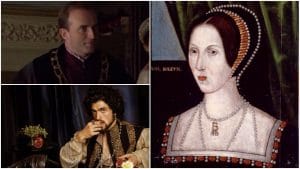 On 29th April 1536, Queen Anne Boleyn had two separate encounters with male courtiers, men who would soon be accused of sleeping with her and plotting with her to kill King Henry VIII.
On 29th April 1536, Queen Anne Boleyn had two separate encounters with male courtiers, men who would soon be accused of sleeping with her and plotting with her to kill King Henry VIII.
You can read more about Anne’s encounters with Mark Smeaton, a musician, and Sir Henry Norris, her husband’s groom of the stool, in an article I wrote last year – click here – but I also wanted to give you links to other articles about these men.
- Was Anne Boleyn in love with Henry Norris?
- Did Mark Smeaton father Anne Boleyn’s baby?
- Sir Henry Norris – Part 1
- Sir Henry Norris – Part 2
- Mark Smeaton with the Marmalade in the Cupboard
- Mark Smeaton the Scrupulous?
- Mark Smeaton – Part 1
- Mark Smeaton Part 2